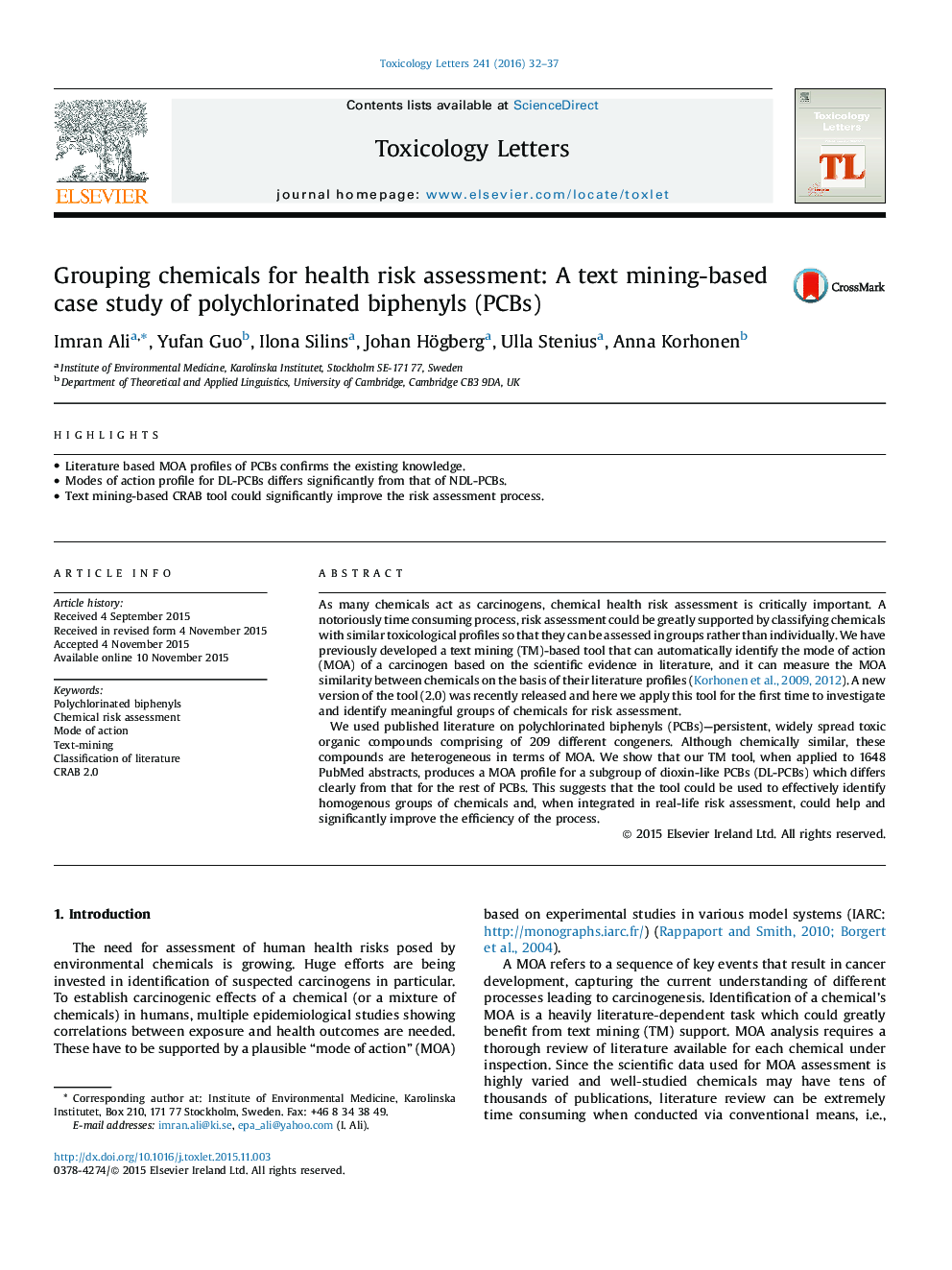| Article ID | Journal | Published Year | Pages | File Type |
|---|---|---|---|---|
| 2598537 | Toxicology Letters | 2016 | 6 Pages |
•Literature based MOA profiles of PCBs confirms the existing knowledge.•Modes of action profile for DL-PCBs differs significantly from that of NDL-PCBs.•Text mining-based CRAB tool could significantly improve the risk assessment process.
As many chemicals act as carcinogens, chemical health risk assessment is critically important. A notoriously time consuming process, risk assessment could be greatly supported by classifying chemicals with similar toxicological profiles so that they can be assessed in groups rather than individually. We have previously developed a text mining (TM)-based tool that can automatically identify the mode of action (MOA) of a carcinogen based on the scientific evidence in literature, and it can measure the MOA similarity between chemicals on the basis of their literature profiles (Korhonen et al., 2009 and Korhonen et al., 2012). A new version of the tool (2.0) was recently released and here we apply this tool for the first time to investigate and identify meaningful groups of chemicals for risk assessment.We used published literature on polychlorinated biphenyls (PCBs)—persistent, widely spread toxic organic compounds comprising of 209 different congeners. Although chemically similar, these compounds are heterogeneous in terms of MOA. We show that our TM tool, when applied to 1648 PubMed abstracts, produces a MOA profile for a subgroup of dioxin-like PCBs (DL-PCBs) which differs clearly from that for the rest of PCBs. This suggests that the tool could be used to effectively identify homogenous groups of chemicals and, when integrated in real-life risk assessment, could help and significantly improve the efficiency of the process.
